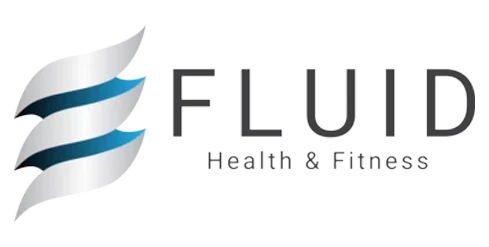
Welcome to the Protect and Restore (PNR) program—Fluid Health & Fitness’s premier 24-week structured training system built to realign your body’s movement blueprint, correct functional imbalances, and restore your foundational capacity for performance. This is not a quick fix. It’s a methodical approach to movement retraining designed to reduce injury risk, enhance performance longevity, and sustainably rebuild how your body moves, breathes, and responds to physical demand.
At the heart of the PNR system is a six-week Foundational Jumpstart Phase—a critical launchpad that builds your neurological, mechanical, and metabolic awareness. Through weekly progressive modules, you’ll gain a deep understanding of the principles that govern healthy movement and learn how each system interrelates to drive long-term success.
Why It Matters
Most fitness programs overlook the foundational layers of movement—how the body breathes, stabilizes, aligns, and coordinates. They jump too quickly into conditioning, forcing load onto dysfunction. This often leads to:
-
Chronic compensations
-
Recurring injuries
-
Limited strength gains
-
Poor metabolic efficiency
The Fluid Methodology corrects this by following a simple principle: Structure before conditioning. Movement quality before intensity.
Before we challenge your capacity, we ensure you have the capacity to be challenged.
Fluid’s System of Integration
To create a cohesive and intelligent training system, Fluid integrates five key models:
1. Big Picture Movement Model – It’s SIMPLE (SMPL)
This organizes how we view the body’s performance potential across four interdependent domains:
| Component | Definition |
|---|---|
| Stability | Ability to control joint position dynamically. |
| Mobility | Capacity of the joint to move through full ROM (range of motion). |
| Proprioception | Body’s ability to sense joint position, force, and timing. |
| Load Capacity | Tolerance for physical stress without breakdown or fatigue. |
2. Assess → Address → Achieve System
This is our operational framework to validate, correct, and progress movement:
| Phase | Function |
|---|---|
| Assess | Identify compensations and asymmetries via functional movement screens. |
| Address | Implement mobility, breathing, or activation corrections. |
| Achieve | Progress into controlled, integrated movement under load. |
3. Gait Cycle Analysis
Every step you take reveals how your joints behave. We break down walking into eight phases (stance and swing), each highlighting specific joint coupling patterns and load responses.
This model allows us to:
-
Identify deficits in transfer mechanics
-
Analyze how the core, hips, knees, and feet coordinate
-
Create interventions specific to gait phase dysfunctions
4. Dynamic Neuromuscular Stabilization (DNS)
DNS is a developmental movement framework that mimics the stages babies use to develop posture and motor control. It helps us retrain global movement patterns by restoring:
-
Intra-abdominal pressure (IAP)
-
Spinal centration
-
Coordinated core stabilization
-
Reflexive movement organization
We use DNS principles to build your body’s awareness in space and reintegrate automatic stabilization mechanisms.
5. Anticipatory Motor Cueing (AMP)
AMP is our coaching method for how to move, not just what to move. It facilitates movement from:
-
Proximal to distal: Core initiates before limbs.
-
Cephalocaudal: Movement flows from head to tailbone.
-
Segmental to global: Local joints cue global actions.
Using AMP, we reinforce coordinated, efficient movement strategies that become habitual and automatic.
The First 6 Weeks: Your Jumpstart Phase
The following six modules form your neurological and mechanical foundation for the full PNR program:
Week 1: Breathing and Diaphragm Mechanics
-
Diaphragmatic vs. accessory breathing
-
How breath influences posture and stability
-
Connection to intra-abdominal pressure (IAP)
Week 2: Joint Mobility and Soft Tissue Readiness
-
Passive vs. active ROM
-
Mobility maps by joint
-
Restoring space for movement
Week 3: Muscle Physiology and Joint Mechanics
-
Muscle contraction types (isometric, concentric, eccentric)
-
Arthrokinematics: small joint motions within the capsule
-
Bone motion vs. joint coupling patterns
Week 4: Multi-Joint Integration & DNS-Based Repatterning
-
Connecting breath, spine, and limbs
-
Using DNS to restore reflexive control
-
Developmental sequencing for stabilization
Week 5: Functional Strength and Periodization
-
Movement prerequisites for loading
-
Phases of strength training: anatomical adaptation → strength → power
-
Understanding tissue recovery timelines
Week 6: Cardiorespiratory Conditioning & Metabolic Coaching
-
Energy system overview (aerobic, anaerobic)
-
Zone-based metabolic coaching
-
Matching heart rate and breath mechanics to training goals
Companion Guides and Tools
Throughout the program, you’ll use the following resources to reinforce learning and track your progress:
How It All Comes Together
The Protect and Restore Program is not a linear workout plan—it’s a layered system. Each concept supports the next:
-
Breathing enables stability
-
Stability enables mobility
-
Mobility enables coordinated, efficient movement
-
Efficient movement supports strength and endurance
-
All of it is guided by structured assessment and individualized correction
This system gives your body the tools to protect itself from breakdown while restoring the capacity to move, perform, and live at your best.
Final Thoughts
Over the next 24 weeks, and especially in these first six, you are not just learning to exercise—you are learning to train intelligently. You will build the awareness and ability to move with precision, strength, and control, backed by proven biomechanics and clinical systems.
Welcome to Fluid.
Let’s rebuild your foundation—together.



